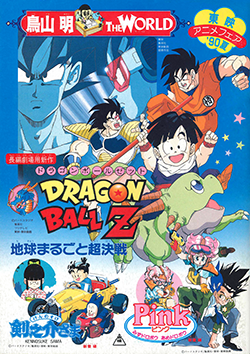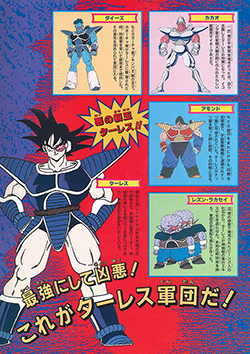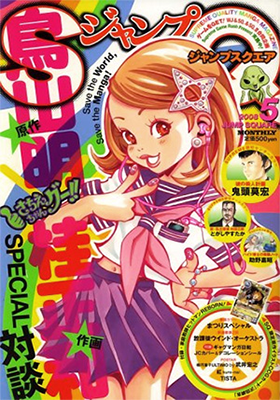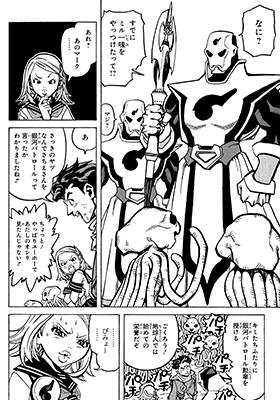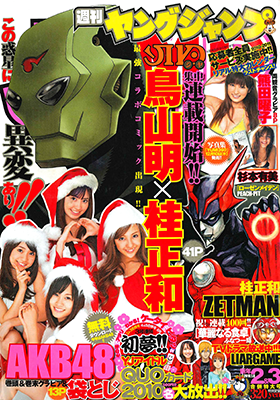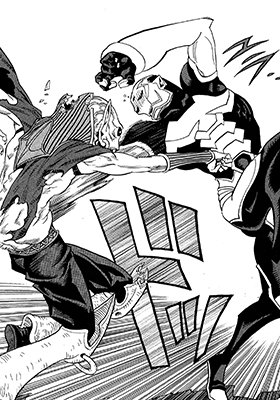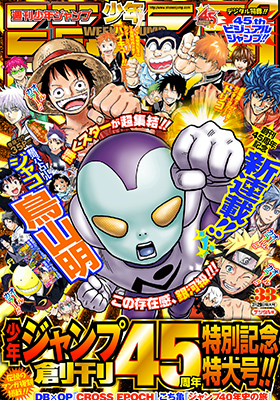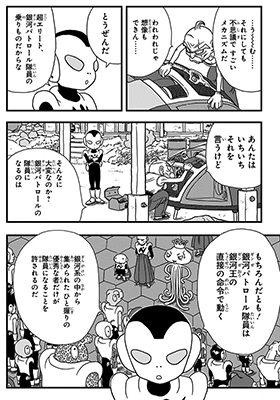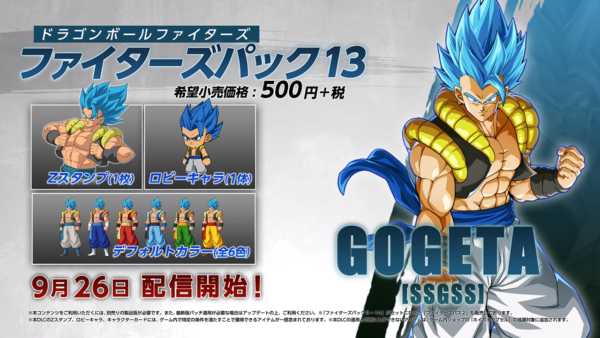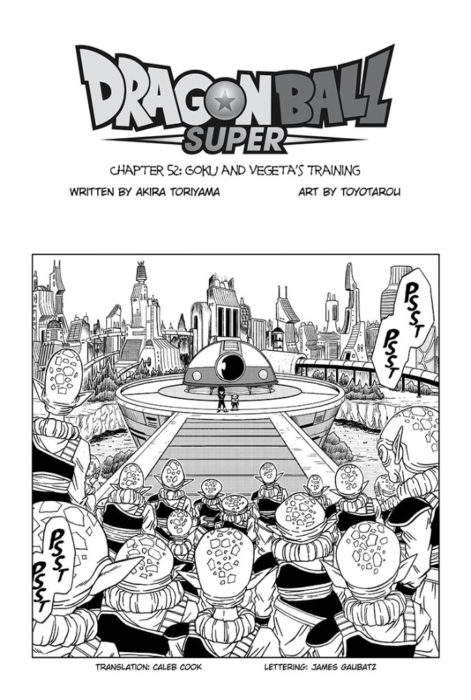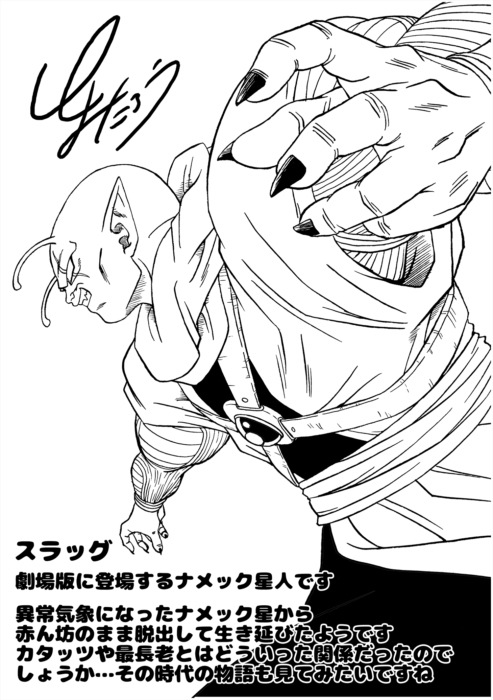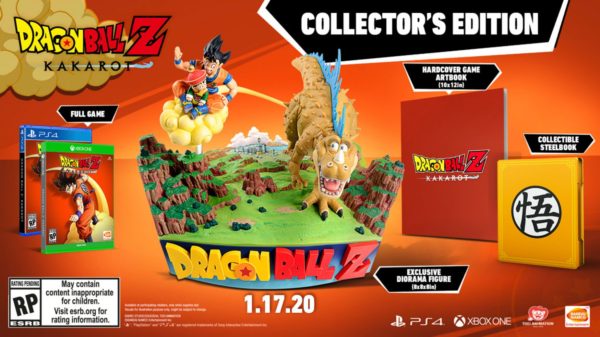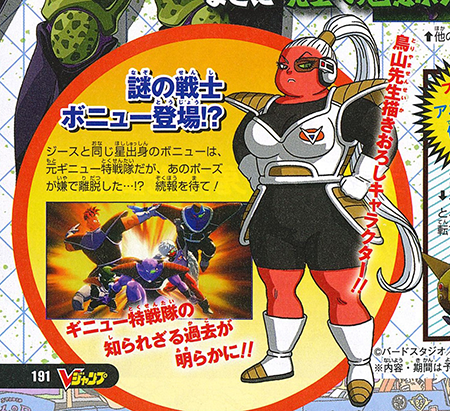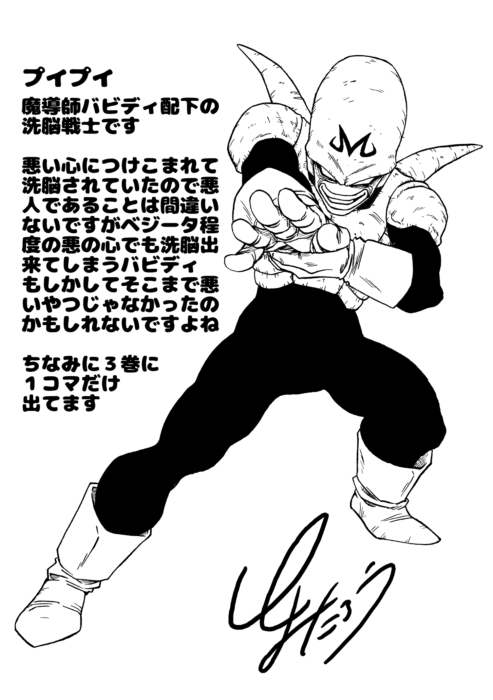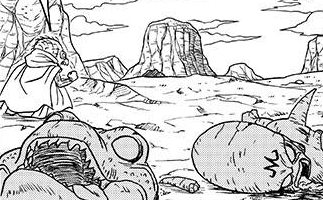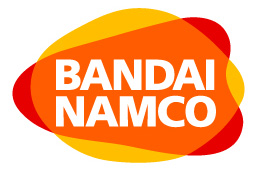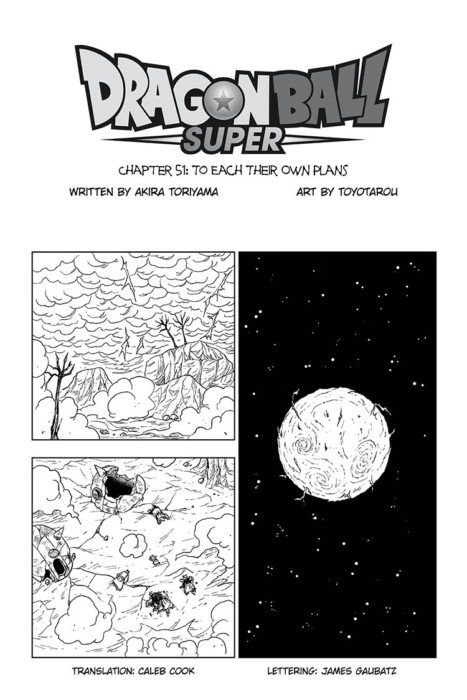While the latest Dragon Ball Super manga chapter certainly gave us plenty to speculate about, in typical Kanzenshuu fashion, what we want to talk about is not necessarily the content of the story itself, but something a little more behind-the-scenes: in this case, puns and possible name sources, particularly with regard to and in response to some of the wild theories going around. Strap in for a crash course in the Galactic Patrol!
Potential minor spoilers ahead for the latest batch of Dragon Ball Super chapters (including chapter 52, released over the weekend in conjunction with the November 2019 issue of Shueisha’s V-Jump magazine where it is serialized in Japan) — so go ahead and catch up, as the official English translation is released online for free day-and-date with the Japanese publication by both Viz and Shueisha themselves!
What is the Galactic Patrol?
The Galactic Patrol (銀河パトロール Ginga Patorōru) is a fictional law enforcement organization in the Dragon Ball franchise and its expanded universe. In its current incarnation, the Galactic Patrol is a group of 38 members overseen by the Galactic King, responsible for protecting the peace throughout the galaxy.
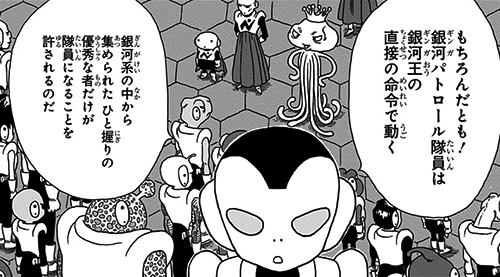
Tracing things back to its deepest roots (there’s a tree pun in here somewhere that I don’t think I’ll quite land), the first reference to anything resembling a “Galactic Patrol” comes from background information on the character Amond in 1990’s third theatrical Dragon Ball Z film as provided in the Summer 1990 Toei Anime Fair brochure, though this information is not stated within the film itself:
He was originally a villainous criminal traveling around the galaxy, but he was arrested by the space police organization and jailed on planet Nutz. He broke out when Tullece attacked planet Nutz, and became one of his men.
While this is where the Galactic Patrol technically began (and there would be the occasional reference to things like a “Galactic Police Organization” in Daizenshuu 7 and even a “Space Police” in Dragon Ball: Episode of Bardock), the version that we know from Jaco the Galactic Patrolman and the latest arc in the Dragon Ball Super manga began to take shape in 2008.
Sachie-chan GOOD!!, debuting in the May 2008 issue of Shueisha’s Jump SQ (“Jump Square”) magazine, is a one-shot manga that serves as the proper debut work in the Galactic Patrol series by Akira Toriyama and Masakazu Katsura. In the brief series, a young girl with a poop-shaped birth mark is visited by aliens who have come looking for strong martial artists; they hope to use these champions to drive away invaders, as the Galactic Patrol has not yet arrived to save them. At the time of its publication, Toriyama felt that there was more to be done with the story, and that it perhaps could have been a short-term serial of about 100 pages. Katsura noted that Toriyama took a liking to the Galactic Patrol designs, and that Toriyama could write something further in connection with it.
Jiya, once again produced by Toriyama and Katsura, is the second entry in the Galactic Patrol series, originally running in Shueisha’s Weekly Young Jump magazine between 2009 and 2010. In the three-chapter series, Galactic Patrolman Jiya arrives on Earth in search of his missing colleague Stece, but quickly finds himself fighting against alien interloper Vampa and his army of giant fleas.
It was in 2013 that Toriyama himself redefined the Galactic Patrol once again with Jaco the Galactic Patrolman, running that year in Weekly Shōnen Jump as a prequel series to Dragon Ball. While still sharing some design DNA, the symbol for the Galactic Patrol in Jaco is different than it had originally appeared in Sachie-chan and Jiya, while other ideas (such as the concept of a Galactic King) are kept as-is.
Following the collected edition release of Jaco, Toriyama acknowledged in the Katsura Akira volume (which collects both Sachie-chan and Jiya) that he had been formulating the idea of the Galactic Patrol series ever since Sachie-chan‘s debut, and that all were considered parts of the Galactic Patrol series.
To be honest, when we started drawing Sachie-chan GOOD!!, I had this idea of a “Galactic Patrol series”. I’d even thought of all this background information. Jaco the Galactic Patrolman, which I had serialized in Weekly Shōnen Jump in 2013, is also a part of that.
The Galactic Patrol expanded further with a Dragon Ball Super manga-exclusive “Galactic Patrol Prisoner arc” (beginning in November 2018 and still ongoing as of this article’s publication), as well as a villain in this year’s Super Dragon Ball Heroes: World Mission video game. With these stories, a wealth of new characters and an extensive back-history has been added to the Dragon World.
A Quick Introduction to Name Puns
Before even Dragon Ball itself began, Akira Toriyama’s character names would often be based around some kind of pun or common theme. In the multi-part “The Truth About the Dragon Ball Manga” interview series from the 2009 Super Exciting Guide series, Akira Toriyama further details his thought process for not just naming characters, but specifically naming groups of characters:
Why are characters’ names grouped into sets?
It’s tough coming up with names for a lot of characters. If you group the names into sets, it’s easier to think of them. For example, the one in control of the Saiyans and other villainous aliens is Freeza. Strictly speaking, Freeza is “freezer”, but I envisioned a refrigerator when I named him. So, I grouped the names according to foods that go inside it. The Saiyans are vegetables [yasai, “vegetables”], and the Ginyu Special-Squad are dairy products [gyūnyū, “cows’ milk”], like that.
Toriyama recently further expanded on his naming process in an interview with Toyotarō within the eighth collected volume of the Dragon Ball Super manga:
When it comes to names, I basically just pick them based off how things sound and the images they bring to mind. But even here I try to be surprising. Like with “Piccolo”, I often intentionally give characters names that don’t fit their image. Also, when there are lots of characters it becomes real tough to name them one by one, so I think of an overarching theme and name them all based off that. Like with Freeza’s army, where everyone is named for something you’d put in the refrigerator or freezer. I often decide names that way since it makes things easier.
The Galactic Patrol Name Puns
The Galactic Patrol members who arrive at the end of Sachie-chan GOOD!! go unnamed. In Jiya, the combination of the names “Jiya” (ジヤ Jiya) and “Stece” (ステス Sutesu) form a play on the word “justice”.
Jaco the Galactic Patrolman serves not only as another soft-reboot of the Galactic Patrol itself, but also serves as the defining point for future Galactic Patrol name puns: fish, generally small ones used as food toppings.
Jaco
Jaco Tilimentempibosshi is the main, titular character from Akira Toriyama’s 2013 series Jaco the Galactic Patrolman, who goes on to make reappearances in the 2015 theatrical film Dragon Ball Z: Resurrection ‘F’ and the Dragon Ball Super series. Jaco’s name (ジャコ jako) refers to small, dried fish called 雑魚 (jako) eaten on top of rice. The same Chinese characters with a slightly different pronunciation (zako) is a term for “small-fry” (totally insignificant individuals not worthy of any particular time or attention). In the final chapter of his series, Jaco is addressed as “Zako-san” by Dr. Brief’s wife, driving home the pun and adding insult to injury.
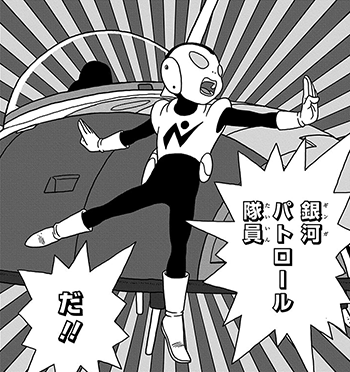
Chiwak
Chiwak (チワック Chiwakku) is a low-ranking Galactic Patrolman who trains hard and possesses adequate power, one of hundreds of characters available in the 2016 Nintendo 3DS video game Dragon Ball Fusions. Despite the only name pun inspiration source to this point being Jaco, the game’s developers at Ganbarion and Bandai Namco saw fit to stick with said scheme, as the character’s name is likely sourced from 竹輪 (chikuwa), a jelly-like food product made from fish surimi and other ingredients. The character’s name is adapted as “Chiwak” in Bandai Namco’s official English localization.
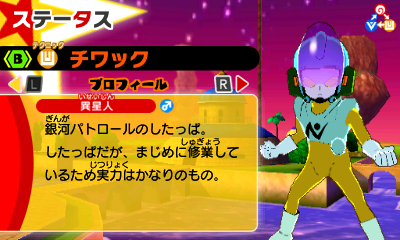
Taiba
Taiba (タイバ Taiba) is a Saiyan who is also a Galactic Patrolman; he comes across as a bit scary, but he has a strong sense of justice and strives to vanquish evil. Like Chiwak, Taiba is one of hundreds of characters available in the 2016 Nintendo 3DS video game Dragon Ball Fusions. We have to admit that Taiba’s name is a bit of a mystery to us: Chiwak’s name clearly pulls on the Galactic Patrol name pun scheme, but with Taiba also being a Saiyan, his name may be sourced from small fish or from vegetables. If you have any ideas on what the source of the name may be, we would love to hear your thoughts! The character’s name is adapted as “Tyber” in Bandai Namco’s official localization.
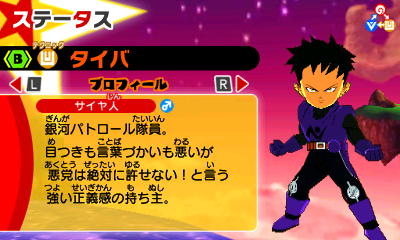
Shiirasu
Shiirasu (シーラス shiirasu), a former Galactic Patrolman and the first Time Patrol member, is the antagonist from Super Dragon Ball Heroes: World Mission on the Nintendo Switch and PC. Shiirasu, designed by Toyotarō, likely takes his name from whitebait, or 白子 (shirasu) in Japanese. The character’s name is adapted as “Sealas” in Bandai Namco’s official English localization.
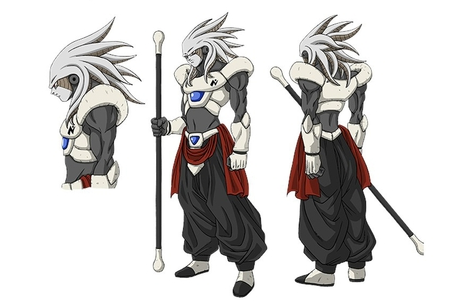
Incidentally, dried shirasu are called 縮緬雑魚 (chirimen-jako).
Iriko
Iriko (イリコ iriko) is a Galactic Patrol member seen in the Dragon Ball Super manga piloting spaceships for Merusu and the other heroes. The character likely takes his name from 煮干し (niboshi), also called 炒り子 (iriko) in Japan and Hawaii, dried infant sardines used for snacks and seasonings. In the official Viz localization of the manga, the character’s name is spelled as “Irico”.
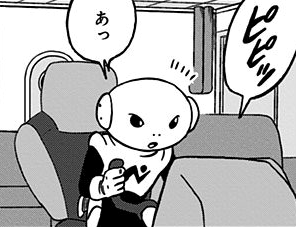
Kusaya Squad
Before we hit the big one, there is one other name in the Dragon Ball Super manga to examine: the Kusaya Squad (クサヤ部隊 kusaya butai). Not a single character, but rather a group of (otherwise unnamed) Galactic Patrolmen, the Kusaya Squad were the ones to get a lock on Moro’s location following the battle with the Macareni Gang. The squad likely takes its name from くさや (kusaya), a salt-dried and fermented fish.
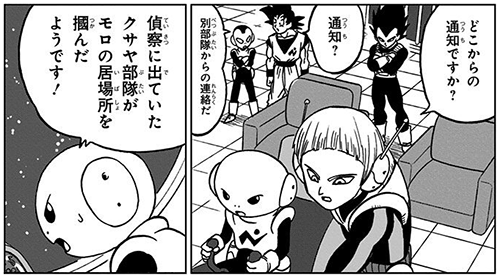
Merusu
That brings us to the man of the hour! Here at Kanzenshuu, we adapted this character’s name (メルス merusu) as “Merusu” because, following along with the above precedents and contemporary names, it is likely an anagram of cuttlefish / dried shredded squid, or 鯣 (surume) in Japanese. In the official Viz localization, the character’s name is spelled as “Merus”; as opposed to Viz cutting the trailing vowel sound, we kept it as-is due to its source as an anagram of a Japanese word.
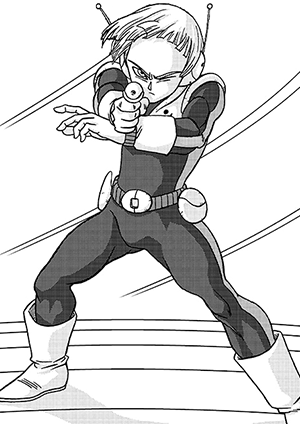
Could there be another source for Merusu’s name?
The California winery Merus has been suggested by some fans as a possible source to indicate some type of heavenly connection for the character… but that is a specific winery, rather than a type of wine (or other alcohol) as would fit in line with other characters. If you search メルス with regard to wine in Japanese, you come across Melsheimer (メルスハイマー Merusuhaimā), a German family winery/estate, long before the California winery. There is some Latin etymology underneath the word “merus” referring to something undiluted or pure, especially wine… which is certainly neat, but remains a bit of a stretch.
Looking back over the entire history of the Dragon Ball franchise and the wide variety of name puns that have existed across all of its media, it seems extremely unlikely that Toriyama or Toyotarō would use a proper brand name as a name pun source.
So where do we go from here?
We are generally not ones for “theories” or trying to predict exactly where ongoing productions of the series are going; rather, we are more interested in the behind-the-scenes stories, documenting what has been released and who said what when in what context, which helps shape a better understanding of the people and their artwork. You may not believe it, but we actually really do enjoy being “wrong” and learning the full stories behind some of these naming decisions.
Perhaps Merusu will wind up like Beerus, with a convoluted history of misunderstandings and artistic vision changes leading to two entirely separate, yet equally valid, name pun sources. What if that “stretch” for Merusu was true all along? Maybe the name “Merusu” is just an alias. Maybe he really is a “deactivated” angel from one of the erased universes just trying to live out his life and do some good without blowing his cover.
On the other hand, perhaps he really is just a small-fry.
We obviously have no way of knowing where Toyotarō and Toriyama are taking Merusu, but we are just as excited as you to see how this all shakes out in the end.
